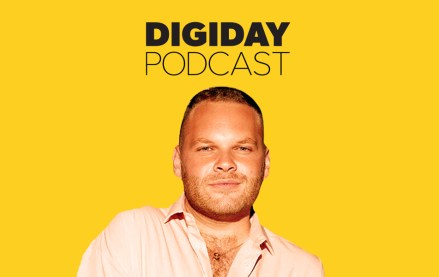Connect with execs from The New York Times, TIME, Dotdash Meredith and many more

Advertisers, agencies and publishers have believed for years that digital and TV are converging.
But how does this truly become a reality? Where do you start, and what do you build first, to make practical progress towards a long-standing vision that benefits the industry? Years of engineering investment, significant integration work and a consideration of emerging video experiences are all part of the equation.
Kelly Liyakasa, director of communications & content for Xandr, spoke with Eric Hoffert, the company’s svp of video technology, to get an engineer’s perspective on the inner workings of the overhaul required to bring a digital-TV integration to life.
KL: Eric, can you fill us in on what you’ve been doing recently on the technical side to build the foundation for digital and TV convergence?
EH: I joined AppNexus just under five years ago and spent the first three and a half years working intensely with our product and engineering teams to put in place a foundation for a premium video advertising platform, where efforts had previously been focused primarily on display and mobile.
Since 2017, CTV and OTT have been a key focus of ours. In parallel, when we became Xandr, we really started to turn our attention to traditional television because we were seeing growing interest from buyers to reach audiences on OTT, broadcast TV, or via both formats, using a single audience segment.
How can brands reach these audiences now?
They can do it with a full-fledged TV platform that supports buyers, agencies, holding companies and advertisers. The attributes of planning, negotiation, execution, reporting, and measurement for TV are quite different, so any such solution has to properly support TV requirements, and it must also ensure that both TV and video buying/selling have a common user experience (look and feel, navigation, web design) in order to make it easy and intuitive to work with either content format. In terms of a next phase, advertisers are going to need the ability to converge TV and video advertising in one platform.
For your team, what was the biggest takeaway you had doing that — integrating a predominantly digitally focused system with the world of legacy TV?
There was a lot of rapid immersion and learning by doing, which happened in three stages. There was the AppNexus stage where we needed to really dive deep and immerse ourselves in television. And we did that by building prototypes, making code that worked to show the use cases come to life with clients. Stage two, when the acquisition was completed, was bringing the wealth of TV knowledge and expertise that came from AT&T Advertising and Analytics as part of the value prop behind the acquisition itself. And that allowed us to quickly gain a great deal of additional expertise and capability in both addressable TV and data-driven linear to complement the work we had already been doing around digital video and OTT. And then thirdly, when we welcomed clypd into the Xandr family, we were able to bring their seven years of experience working on the sell side with TV programmers and combine it with our capabilities that we had been investing in heavily on the buy side to be able to build this joint solution. As a result, I believe we’re well-equipped to deliver on what, so far, has largely been promise and potential in the marketplace.
In what ways have you seen B2B and B2C use cases in video converge?
When we built the digital video and OTT digital marketplace at AppNexus, we had a very strong focus around superior user experience. In particular, we were very focused on lowering latency for viewing video content with advertising. Now, especially as we move to a streaming world, even with what’s going on currently in terms of the Internet starting to accommodate huge volumes of video bandwidth unexpectedly, these kinds of techniques and technologies to reduce latency, whether it’s for video advertising that’s delivered in the form of pre-roll, mid-roll, post-roll, or fully integrated into adaptive streams on the Internet are increasingly important.
Having a user experience with instantaneous video playback over the internet and a seamless server-side integration of content and advertising is really critical. For traditional broadcast TV, age and gender has been a common way of targeting audiences on traditional broadcast television for almost 50 years, and we’re doing the best that we can to play a leadership role to move the industry to audience-based buying.
So looking at those two examples – one, creating a low latency experience for streaming video that supports monetization across channels, and two, bringing that advanced audience targeting methodology to traditional TV to improve relevance – it’s ultimately about improving and enhancing consumer experience, where advertising is an integral part of what makes delivering the content to viewers viable in the first place.
What, in your view, is most groundbreaking about bringing data and advanced technology to bear in linear TV?
When you can empower a buyer to be able to access inventory across multiple programmers, across effectively what are private marketplaces, but with one audience segment, that brings a great deal of capability, improves efficiencies for buyers and also it makes this much more of a digitally-centric audience based platform with flexibility around data you’re able to activate.
From a technology perspective, because we’ve plugged clypd into our solution on the sell side with many years of work on their side integrating into enterprise legacy systems of premium broadcasters, it is feasible to access inventory in a uniform and powerful way within a web-based platform. We are enabling companies moving increasingly into digital video and OTT while still supporting major businesses on traditional broadcast. This approach allows us to provide a foundation to deliver reach and audience, brings unique value for buyers, supports controls for sellers and powers a more relevant advertising experience for consumers.
More from Digiday

In Graphic Detail: Inside the state of the creator economy industrial complex
The creator economy might have started out as an alternative to traditional media, but is becoming more and more like it as it professionalizes.

Ad Tech Briefing: How ad tech underpins the fate of Madison Avenue’s ‘Wedding of the Year’
The ‘brand safety’ debate is threatening to derail the IPG-Omnicom merger, while questions are raised on the integration of Annalect and Acxiom.

‘Embrace your chaos’: How creator Brandon Edelman is trying to plan for the future
While creators are now key to marketing budgets, their longevity in the fast-paced digital world is a pressing concern. This episode explores how TikToker Brandon Edelman is navigating that challenge, building a sustainable career by diversifying his content and focusing on brand partnerships.





